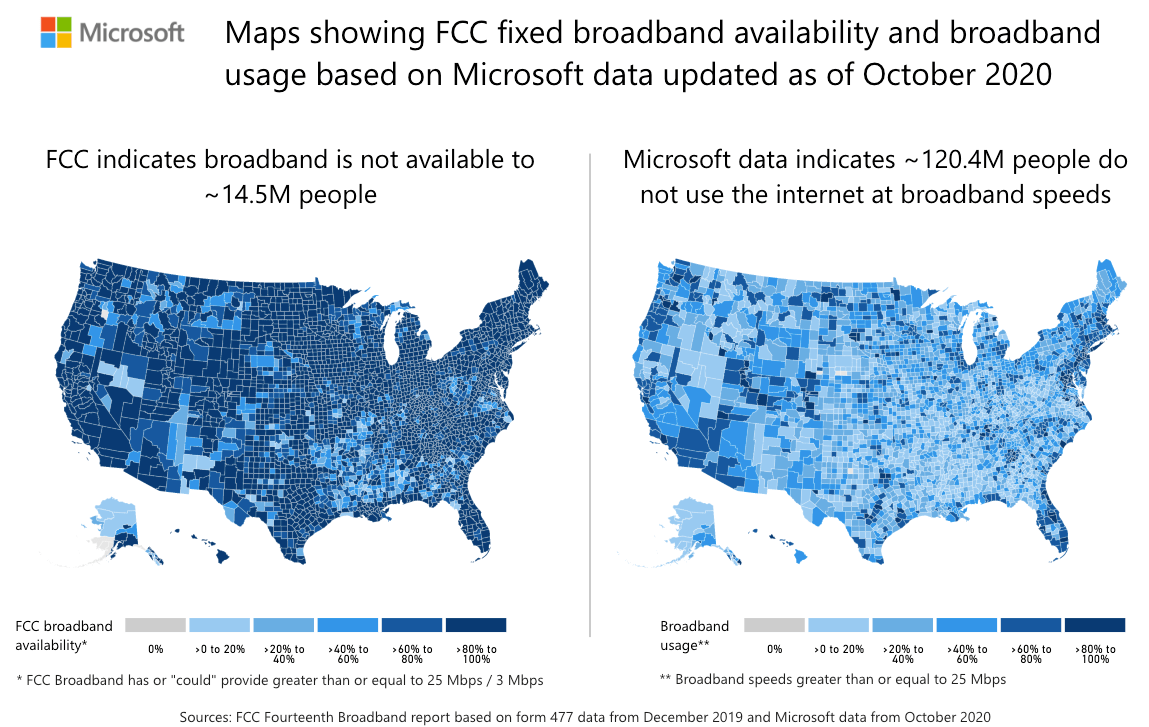[ad_1]
Key findings
- Americans are currently getting around 203 Mbps of download speed and 23 Mbps of upload speed
- Mobile download speed jumped nearly 17% over the last year globally, fixed broadband up at least 28%
- Gains in upload speed were even more pronounced, with mobile becoming at least 9% faster and fixed broadband becoming at least 30% faster.
- Spectrum and Xfinity were the fastest providers, with both in the range of 232-234 Mbps.
As of May 2023, Ookla’s Speedtest.net shows Americans are getting over 200 Mbps of download speed and about 23 Mbps of upload speed through their fixed broadband connections — good for 6th in the world for median fixed broadband speeds. Considering “fast internet speeds” are generally defined as any download speed above 100 Mbps, Americans are doing quite well by this measure.
In fact, according to a recent Allconnect data report, 9 in 10 households can access at least 100 Mbps speeds.
That’s an incredible improvement from just under a decade ago when the U.S. had an average download speed of just 31 Mbps. In 2013, America ranked 25th among 39 nations for broadband speed.
Granted, the rest of the world improved too — Ookla estimates that global speeds went up 28% between 2021 and 2022 alone — but the U.S. has outpaced even that rapid progress. Much of that improvement was a result of faster fiber-optic connections being installed around the country. Around 40% of Americans currently have access to fiber internet, with most offering incredibly fast speeds over 1,000 Mbps.
The report also showed, “Gains in upload speed were even more pronounced with mobile becoming at least 9% faster and fixed broadband becoming at least 30% faster.”
Why is America behind 5 other countries?
Despite consistently climbing the rankings over the past decade, America still ranks well behind several other countries. Singapore has the fastest median internet speeds in the world, with 241 Mbps, followed by Chile at 223 and United Arab Emirates (UAE) at 220 Mbps. So what are Singapore and Chile doing that we’re not?
For Singapore, it’s mostly a square-footage advantage. Singapore has much less ground to cover at merely 278.6 square miles — about half the size of Los Angeles. As a center of finance in Asia, Singapore’s economy is also highly dependent on a high-functioning digital infrastructure.
According to Fierce Telecom, “Chile’s dominance comes after the country’s government in March 2022 completed construction of a fiber project designed to help connect more than 500,000 users in the southern regions there.”
Americans get fast internet, but we pay more for it
An Open Technology Institute report analyzing 760 internet plans across 28 cities in Europe, Asia and North America found that consumers in the U.S. pay more on average for monthly internet service than consumers abroad. The study reports that the average U.S. internet price across all plans in its dataset is $68.38/mo. for standalone internet service, including equipment rental fees and discounts. The analysis also determined that while the U.S. does offer fast speeds, like those provided by fiber-optic internet, these speeds are still the most expensive in the U.S.
Even though we get and use fast broadband speeds on average, that’s a lot to pay, and prices are increasing.
According to the FCC’s International Broadband Report, the U.S. came in at No. 21 of 26 countries on the “Fixed Hedonic Price Index” — which adjusts for “cost, demographic and quality differences across the countries.”
Of course, the U.S. is more spread out geographically than most of the countries on the list, so costs for delivering broadband will necessarily be higher. But some heavy internet users might actually be better off here than anywhere else.
“For so-called bandwidth hogs who stream lots and lots of video, the U.S. offers some of the lowest cost per megabit transmission speed and megabyte data delivered,” Penn State telecommunications professor Rob Frieden told Politifact. That’s one way to tilt the price-value ratio in your favor — start streaming more Netflix.
Fastest internet providers
According to Ookla, “Spectrum edged out Xfinity to claim the fastest median download speed among top fixed broadband providers in the United States at 234.80 Mbps during Q1 2023.”
Xfinity was second at 232.85 Mbps, Cox third at 219.20 Mbps, Optimum fourth with 195.97 Mbps and Frontier fifth with 190.15 Mbps.
Americans may be doing well on average, but it’s not spread equally
The Federal Communication Commission’s (FCC) latest 2023 data shows 92.2% of U.S. households have access to internet speeds of 100 Mbps or above. However, satellite internet is often the only game in town in rural areas, and it can be expensive and have high latency. Still, new wireless providers like T-Mobile and Verizon have stepped in to offer inexpensive alternatives like fixed wireless to satellite in many rural areas.
That said, those with access to fiber internet are largely concentrated around cities, and they likely skew U.S. broadband averages significantly. Not everyone in the country benefits from that knowledge similarly.
We still have an internet divide in the U.S. While some people are getting 1,000 Mbps download speed — enough bandwidth to stream 4K video on 40 TVs simultaneously — others are struggling to check their emails.
In 2022, Microsoft analyzed the FCC broadband data in the U.S. and found that one-third of people in the U.S. aren’t using the internet at minimum broadband speeds, which the FCC considers 25 Mbps download and 3 Mbps upload. For context, that’s around what the average house in Uzbekistan gets. So, although access to internet is growing in the U.S., affordability is still an issue.

Image credit: Microsoft
The bottom line
The U.S. certainly still has a lot of issues to work out with its broadband infrastructure — the rural internet divide chief among them — but the latest numbers are still encouraging. A median speed of 203 Mbps would be plenty for all but the highest-usage homes. The problem is just making sure everyone can access speeds that high.
Want to see how your internet compares to the nationwide average? Take our speed test below to find out.
Pro Tip: For best results, use an Ethernet cord to connect your router or modem directly to your device before you run the test.
For researchers and journalists
If you would like to know more about this topic, we can assist you. Our experts can help you dig deeper into the data.

Written by:
Joe SupanPrincipal Writer, Broadband Content
Joe Supan is a principal writer for Allconnect and CNET. He has helped build the proprietary metrics used on Allconnect’s review pages, utilizing thousands of data points to help readers navigate these complex… Read more
Edited by:
Robin LaytonEditor, Broadband Content
[ad_2]
